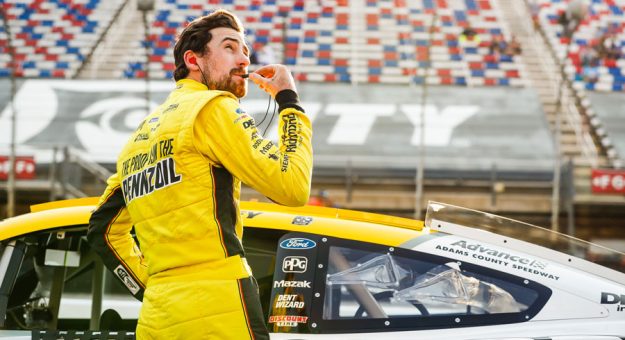Despite being the defending All-Star Race winner, Ryan Blaney doesn’t feel any different going into Sunday’s 200-lap exhibition race at North Wilkesboro Speedway.
It’s a different year. It’s a different race track. And it’s in a different state.
Last May, at Texas Motor Speedway, Blaney battled Denny Hamlin to the checkered flag in overtime, gapping the No. 11 Joe Gibbs Racing driver by .266 seconds. Blaney took home the $1 million winner’s check, successfully claiming his first All-Star victory.
He became the 26th different driver to win the illustrious specialty race since its first run in 1985.
But as the Team Penske driver said on Saturday night, while it’s nice to have won it, the experience doesn’t mean much when it comes to Sunday’s edition of the race.
After all, the list of similarities between the two facilities is paper thin.
Compared to the 1.5-mile, smooth Texas oval, North Wilkesboro boasts a .625-mile layout with patched asphalt and an abrasive surface. Furthermore, the short track features an uphill backstretch and downhill frontstretch — a unique sight on the NASCAR circuit.
The average lap speed during last year’s 125-lap contest in Texas was 102.62 mph, while the average lap speed during Saturday’s heat races at the Wilkes County oval was 87.259 mph.
All factors considered, Blaney doesn’t consider himself to hold any sort of advantage over the remaining 23 drivers in the All-Star field.
As it’s been 27 years since the last NASCAR Cup Series race was run at North Wilkesboro, every driver is largely in the dark about what to expect from the race track. The only thing Blaney is sure of, is that Sunday’s race will require patience.
“It’s going to require discipline getting started,” Blaney said. “You’re going to have somebody beating your bumper off, trying to get by you who isn’t taking care of their stuff in the short run. You might get them back later, but it’s going to be really easy to over push your stuff and then you’re going to be hurting.”
The All-Star Race format involves a “competition break” on or around lap 100, but from that point on, there will only be one set of sticker tires available to drivers. After struggling to conserve tires during his 20-lap runs in practice, Blaney is apprehensive about managing tire falloff in his No. 12 Ford over the long run.
“It’s going to take a lot as a driver to run your race here, run your pace. It’s not easy to do when you’ve got someone breathing down your neck, but that’s kind of what you have to have in the back of your head,” Blaney said. “If you abuse your stuff, you’re going to be paying for it later in the run.
“If you’re conservative early, it might benefit you 20 laps into a run.”
